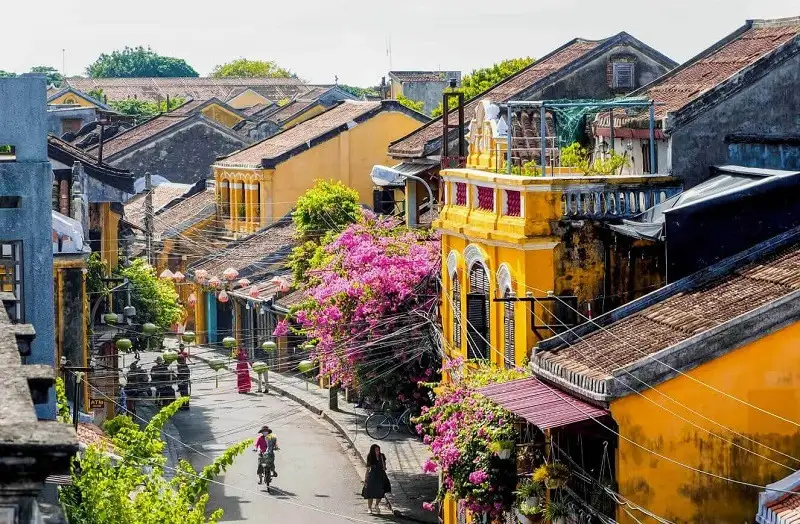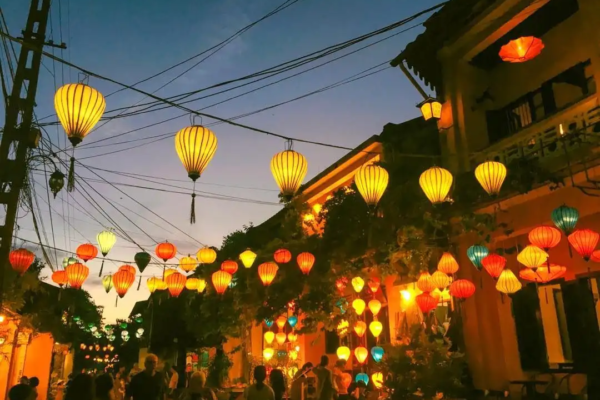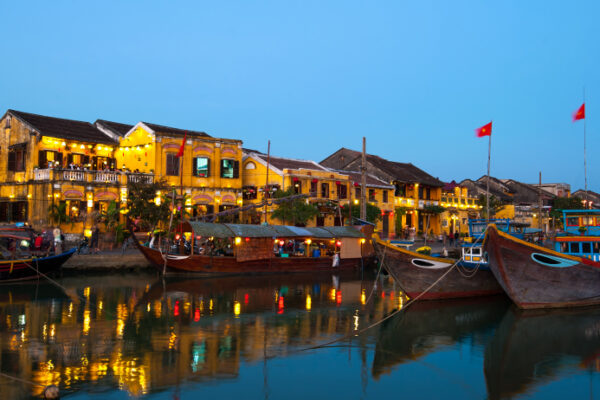Stepping into Hoi An’s Ancient Town, I found myself transported to a world where centuries-old traditions blend seamlessly with modern craftsmanship. The narrow streets, lined with vibrant lanterns and weathered yellow buildings, set the stage for an unforgettable hoi an tailoring experience that would leave me with more than just hoi an custom clothes – it gifted me with cherished memories of Vietnam’s rich cultural tapestry.
The Allure of Hoi An’s Tailoring Scene
As I wandered through the bustling streets of Hoi An, the gentle hum of sewing machines and the rustle of fabric caught my attention. Every few steps, a new tailor shop appeared, each window showcasing an array of colorful silks and intricate designs. It quickly became clear why Hoi An is renowned as a fashion lover’s paradise, offering unique hoi an fashion.
What sets Hoi An apart is not just the sheer number of tailors – estimated at over 400 in this small town – but the centuries-old tradition of craftsmanship that has been passed down through generations. Many of the tailors I encountered spoke of learning the trade from their parents or grandparents, carrying on a legacy that dates back to when Hoi An was a major trading port in the 15th century. This tradition defines the hoi an tailoring experience.
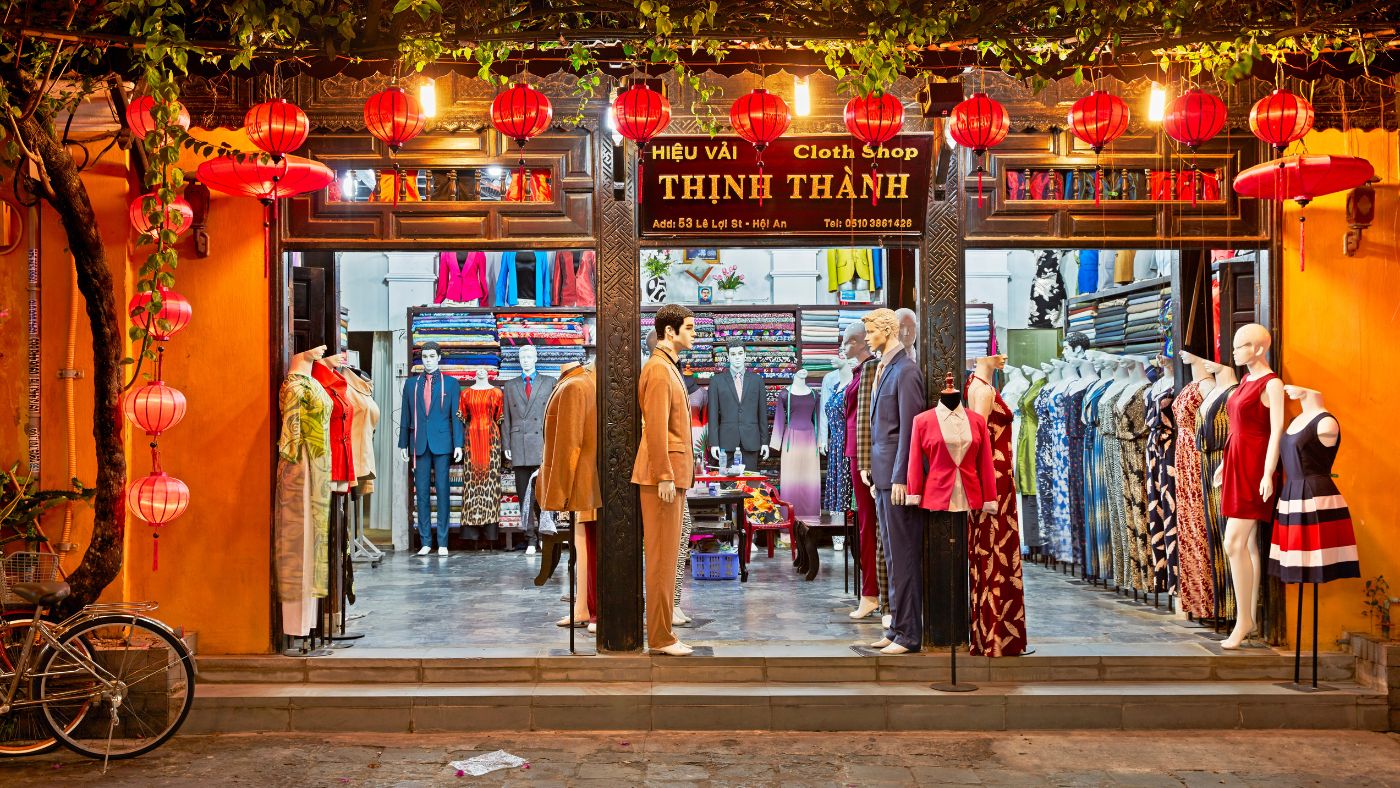
Vibrant Hoi An fashion displayed in ancient town shops.
While it’s tempting to dive into the first shop you see, take time to explore. Each tailor has their specialty, and prices can vary significantly among the ancient town shops. I found that shops slightly off the main tourist drag often offered better value and a more personalized experience for your hoi an custom clothes.
Navigating the Sea of Choices
Overwhelmed by options, I decided to start my journey at the Cloth Market on Tran Phu Street. Here, rows upon rows of fabric shops offered everything from lightweight linens to luxurious silks in every color imaginable – essential for creating hoi an custom clothes. The sensory experience was intoxicating – running my fingers over smooth satins and rough tweeds, inhaling the scent of new fabric, and marveling at the kaleidoscope of colors in these ancient town shops.
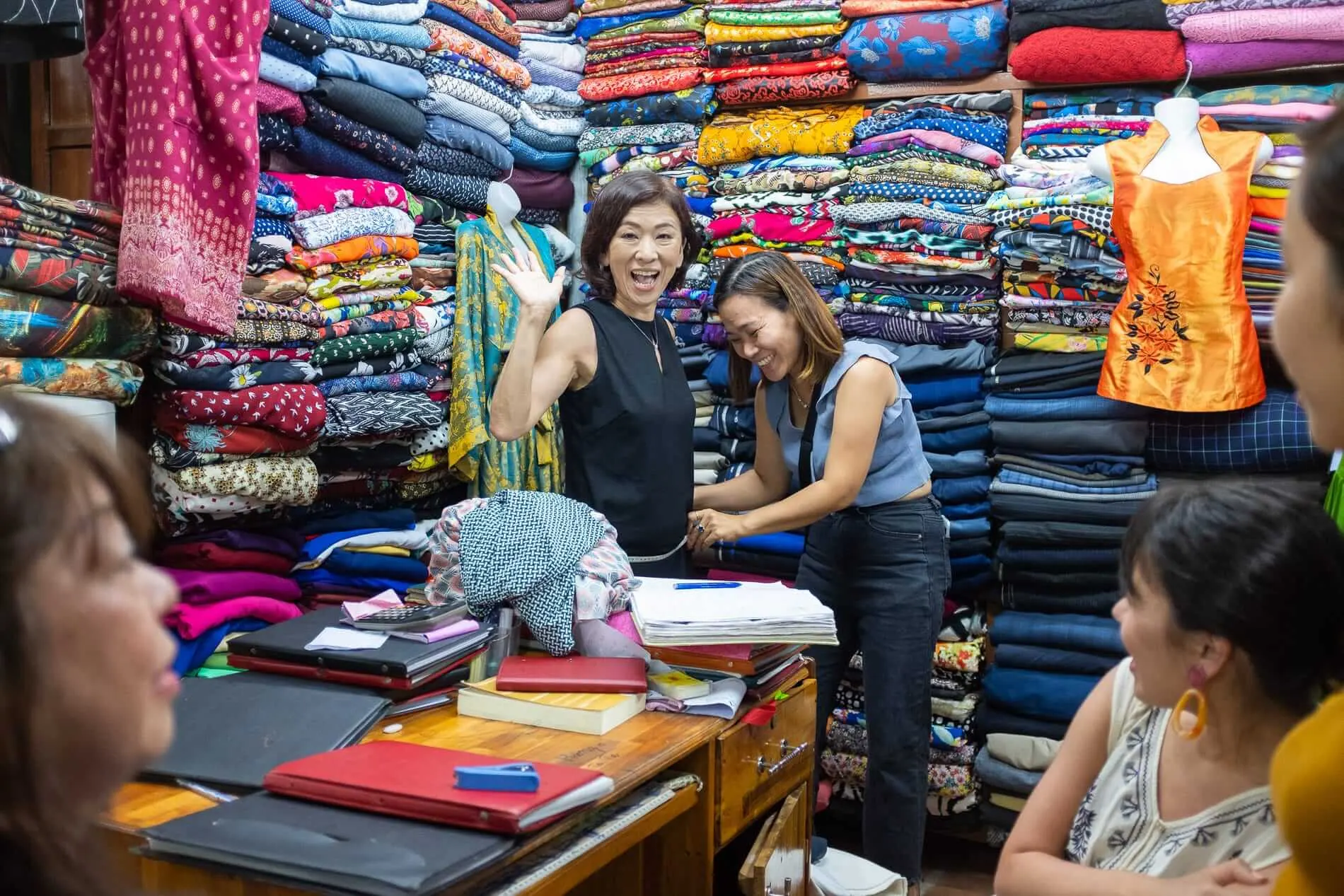
Browse fabrics in the ancient town shops, preparing for custom clothes.
One shop owner, a petite woman named Mai, patiently helped me navigate the choices. She explained the differences between various fabrics, their suitability for different garments, and even shared tips on care and maintenance. Her knowledge was invaluable, especially when I mentioned my plans to travel further in Southeast Asia’s humid climate, aiming for perfect hoi an custom clothes.
Choosing a Tailor: A Personal Touch
Armed with my chosen fabrics, I set out to find the perfect tailor for my hoi an custom clothes. After visiting several shops, I stumbled upon a small, family-run establishment tucked away on a side street. The moment I stepped inside, I knew I’d found something special for my hoi an tailoring experience.

A tailor providing a personalized Hoi An tailoring experience.
The shop was a cozy space, walls lined with fashion magazines and fabric swatches. An elderly gentleman sat at an ancient Singer sewing machine, his weathered hands moving with surprising agility as he worked on a delicate embroidery. His daughter, Linh, greeted me with a warm smile and began to ask about my vision for my hoi an custom clothes.
What struck me most was Linh’s attention to detail. She didn’t just take my measurements; she observed how I moved, asked about my lifestyle, and even inquired about my favorite outfits back home. This level of personalization, I realized, was what set Hoi An’s tailoring experience apart from simply buying off-the-rack clothing.
The Art of the Fitting
Over the next few days, I returned to the shop for fittings. Each visit felt like stepping into a friend’s home rather than a business transaction related to my hoi an custom clothes. Linh and her father worked tirelessly, making minute adjustments to ensure every seam lay perfectly for my hoi an custom clothes.
Don’t rush the process. Plan to stay in Hoi An for at least 3-4 days to allow time for fittings and adjustments. This ensures you’ll leave with perfectly tailored garments.
During one fitting, Linh shared stories of some of her most memorable clients – from celebrities seeking discreet, high-end tailoring to backpackers splurging on their first custom suit. These anecdotes painted a vivid picture of Hoi An’s diverse appeal and the central role tailoring plays in the town’s identity and hoi an fashion scene.
As my garments took shape, I gained a newfound appreciation for the skill and artistry involved in tailoring. Watching Linh’s father hand-stitch delicate details onto my blazer, I realized I was witnessing a craft that has remained largely unchanged for centuries, despite the march of technology – a core part of the hoi an tailoring experience.
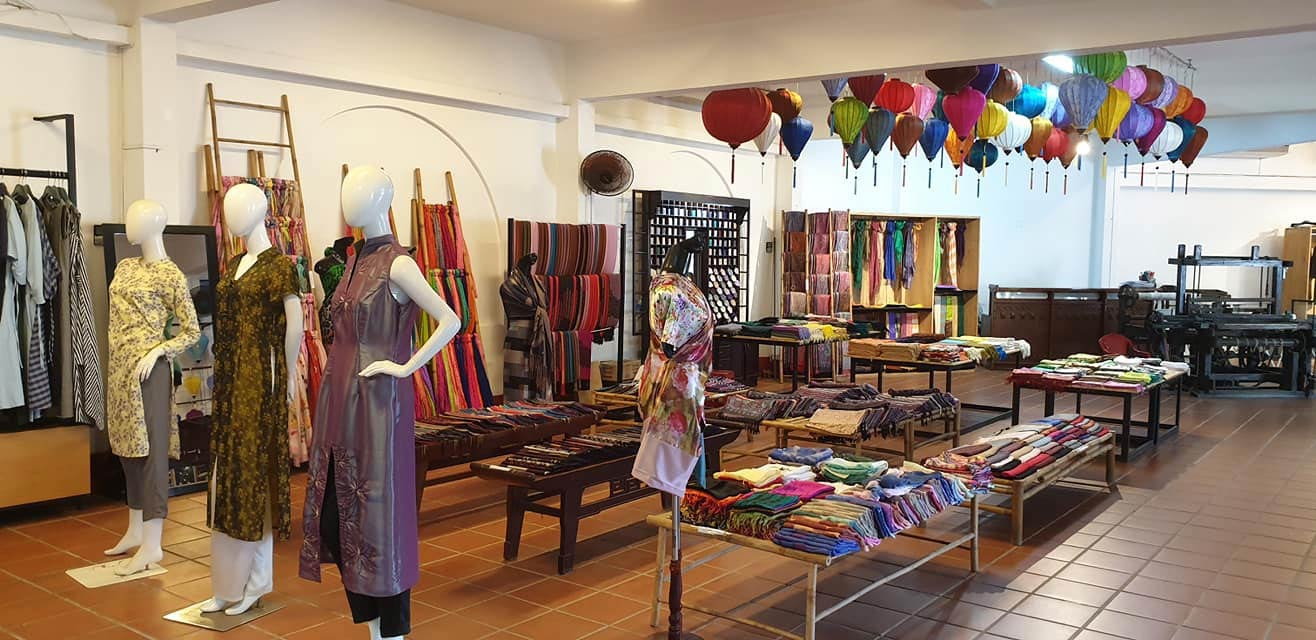
Beautifully finished Hoi An custom clothes.
Beyond Clothes: A Cultural Experience
My tailoring journey in Hoi An turned out to be about much more than just acquiring new clothes. It became a window into Vietnamese culture, craftsmanship, and hospitality. Between fittings, I explored the town’s other charms – sipping ca phe sua da (Vietnamese iced coffee) at riverside cafes, sampling banh mi from street vendors, and visiting ancient temples. These experiences are intertwined with the hoi an tailoring experience and exploring the ancient town shops.
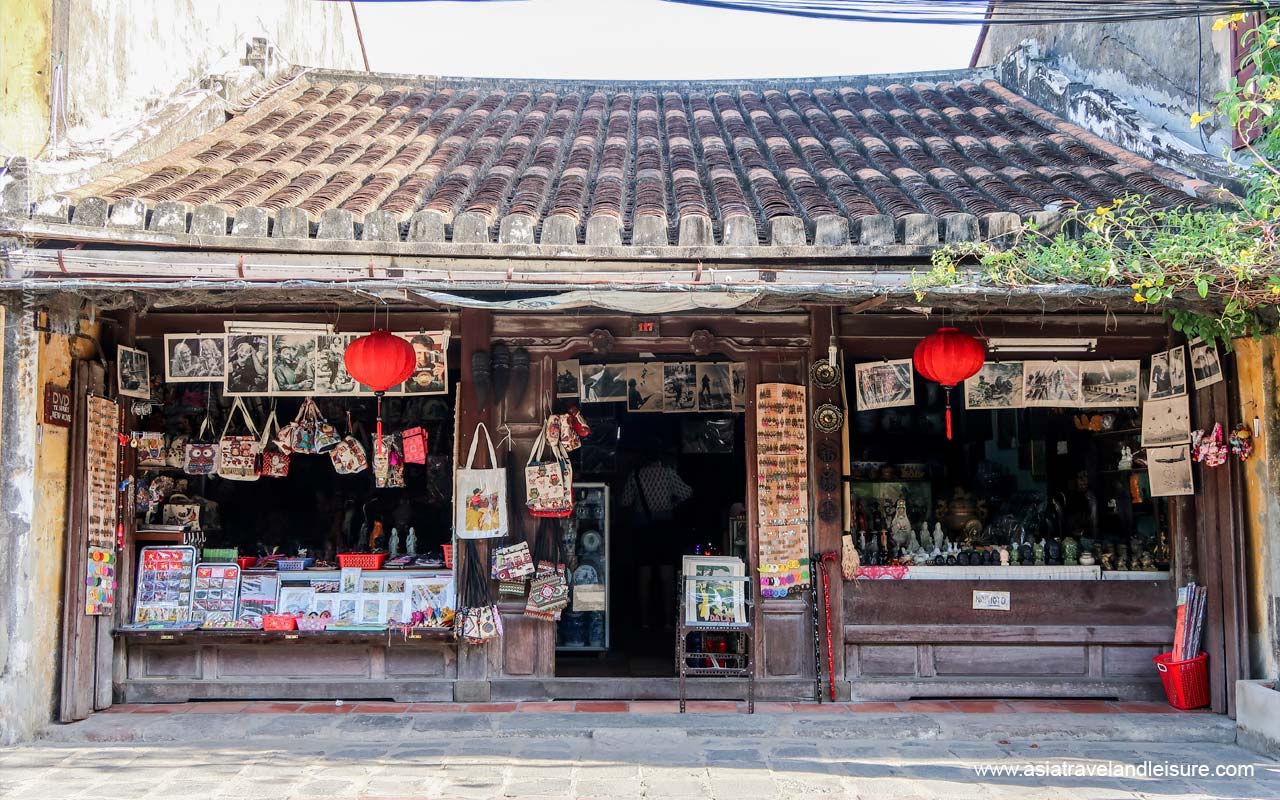
The charming streetscape of ancient town shops in Hoi An.
One evening, Linh invited me to join her family for dinner. Over a feast of local specialties like cao lau (a noodle dish unique to Hoi An) and white rose dumplings, we chatted about life in Hoi An, the challenges facing traditional craftspeople in a changing world, and their hopes for the future. This intimate glimpse into local life added depth to my understanding of the town and its people.
Practical Tips for Your Hoi An Tailoring Adventure
- Timing is Everything: Visit during the shoulder season (April-May or September-October) to avoid the crowds and enjoy pleasant weather while exploring the ancient town shops and tailors.
- Budget Wisely: Prices vary widely. Set a budget beforehand, but be prepared to invest in quality for your hoi an custom clothes. A well-made garment can last for years.
- Bring Inspiration: Photos of styles you like can help communicate your vision to the tailor.
- Quality Check: Before leaving, carefully inspect your garments. Don’t hesitate to ask for adjustments – reputable tailors want you to be satisfied with your hoi an custom clothes.
- Shipping Options: Many tailors offer shipping services if you’re worried about luggage space. Just ensure you have clear communication about costs and delivery times.
Conclusion
As I packed my new wardrobe – a perfectly fitted blazer, a flowing silk dress, and a crisp linen shirt – I realized I was taking home much more than just clothes. Each piece was imbued with memories of Hoi An’s charming streets, the patience and skill of its craftspeople during the hoi an tailoring experience, and the warmth of the connections I’d made. These hoi an custom clothes represent the best of hoi an fashion found in the ancient town shops.
My Hoi An tailoring experience had transformed mere fabric into wearable souvenirs, each stitch a reminder of the town’s rich history and the hands that had carefully crafted them. It was a journey that went beyond fashion, touching the very heart of Vietnam’s cultural heritage.
For those seeking to explore more unique travel experiences like this, visit Find Tour Go and discover your next adventure.
